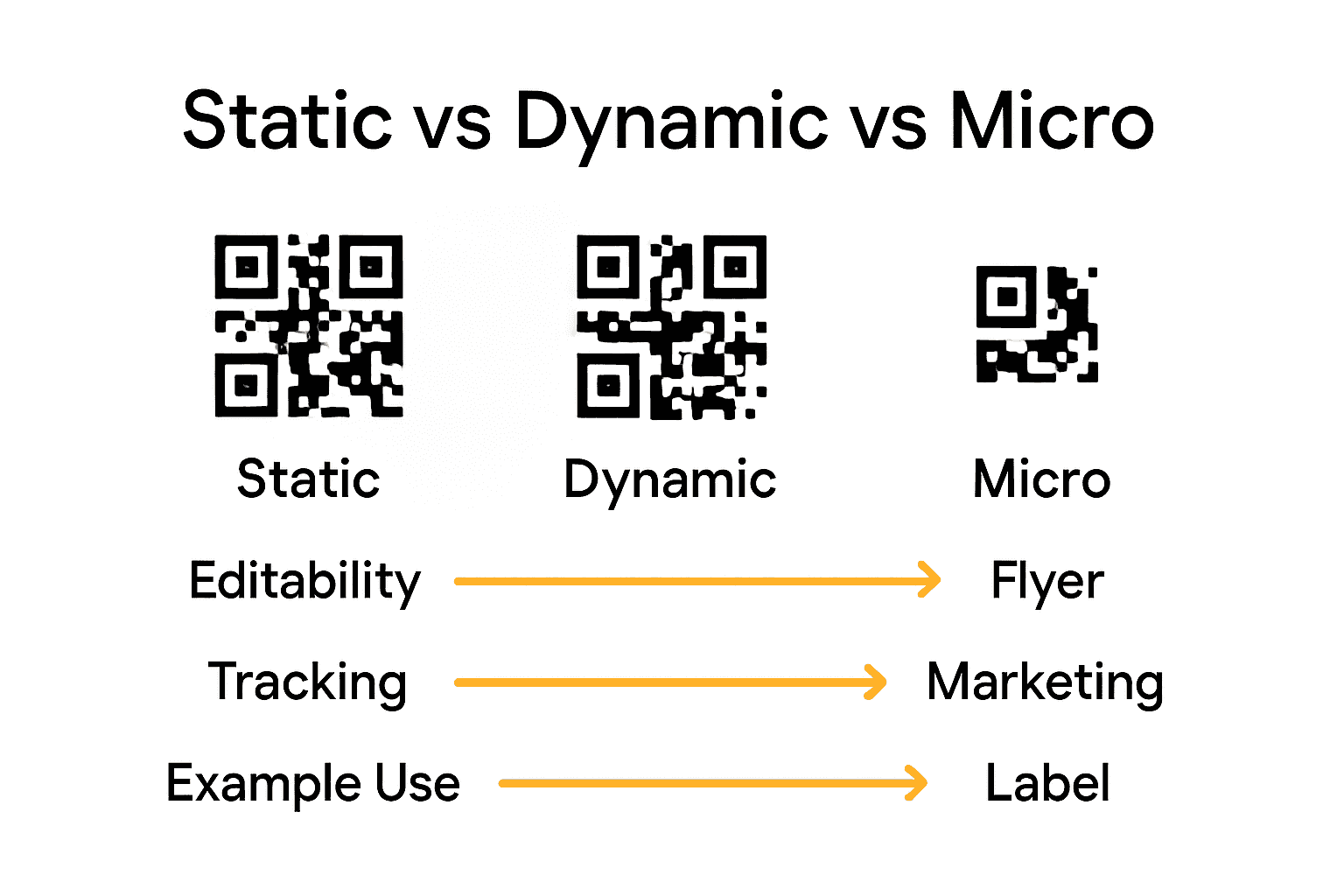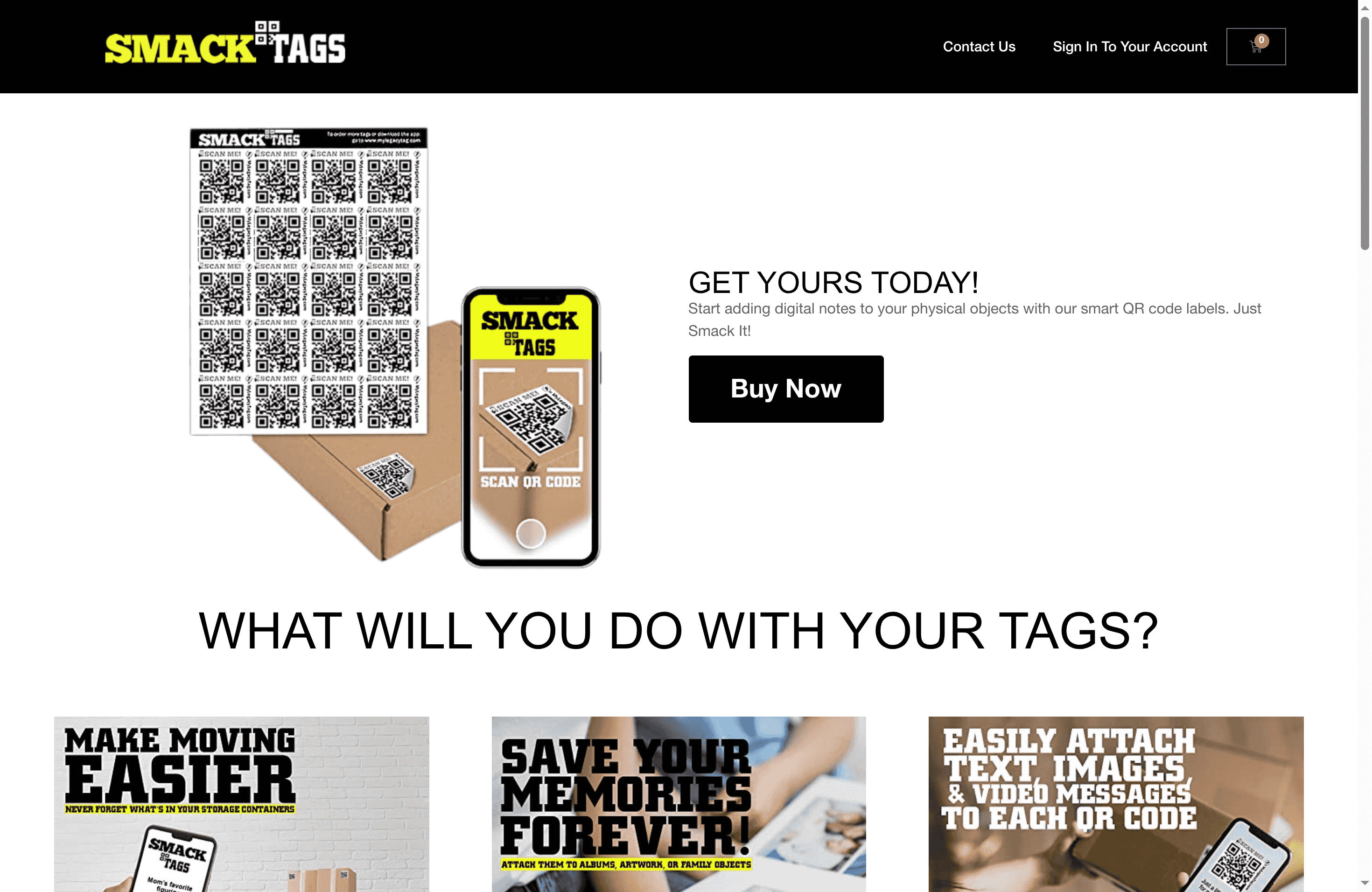Role of QR Codes in Business: Complete Guide
Did you know that over 6 billion QR code scans were recorded worldwide in just one recent year? This surge highlights how these digital squares have woven themselves into daily routines, from quick payments to instant information sharing. As QR codes become more common in business and personal life, understanding what they actually do—and what hidden risks they might carry—can help you use them with greater confidence and safety.
Table of Contents
- Defining QR Codes And Common Misconceptions
- Types Of QR Codes Used In Business
- How QR Codes Work In Modern Enterprises
- Key Use Cases Across Different Industries
- Risks, Security, And Compliance Concerns
- Best Practices For Effective QR Code Deployment
Key Takeaways
| Point | Details |
|---|---|
| Understanding QR Codes | QR codes can store more data than traditional barcodes and are not inherently secure; they can be exploited for phishing attacks. |
| Types of QR Codes | Businesses use static QR codes for fixed information and dynamic QR codes for flexible content updates and tracking. |
| Implementation Risks | Organizations should be aware of cybersecurity risks and implement robust security protocols when deploying QR codes. |
| Best Practices | Effective QR code deployment requires strategic planning, including selecting the appropriate type and ensuring clear visual design for user engagement. |
Defining QR Codes and Common Misconceptions
A Quick Response (QR) code is a fascinating digital technology that packs a surprising amount of information into a small square of black and white squares. Originally developed in 1994 by Denso Wave for tracking automotive parts, these two-dimensional matrix barcodes have evolved far beyond their initial industrial purpose Wikipedia.
At their core, QR codes function as a visual data storage and transmission method. Unlike traditional barcodes that store data horizontally, QR codes can store information vertically and horizontally, allowing them to contain significantly more data in a compact space. They can encode various types of information including website URLs, contact details, plain text, and even small multimedia files.
However, many people harbor misconceptions about QR codes that can potentially compromise their digital safety. Contrary to popular belief, QR codes are not inherently secure. According to recent cybersecurity research, these seemingly innocent square patterns can be weaponized in what experts call ‘quishing’ attacks TechRadar. Malicious actors can manipulate QR codes to redirect users to phishing websites or initiate harmful script downloads.
To protect yourself when scanning QR codes, consider these essential safety tips:
- Always verify the source of the QR code
- Use a QR code scanner with built-in security features
- Avoid scanning codes from unknown or suspicious sources
- Check the destination URL before fully loading the linked content
- Keep your device’s security software updated
While QR codes offer incredible convenience for sharing information quickly, understanding their potential risks is crucial for responsible digital interaction.
Types of QR Codes Used in Business
Businesses today leverage multiple QR code types to streamline information sharing and enhance customer engagement. According to research from QRTrac, these digital tools can be broadly categorized into two primary classifications: static and dynamic QR codes, each serving unique organizational needs.
Static QR codes represent fixed information that cannot be altered once generated. These are ideal for scenarios requiring permanent data representation, such as displaying company contact details, linking to a permanent website page, or sharing consistent product information. Organizations frequently use static QR codes for business cards, marketing materials, and permanent signage where the underlying information remains unchanged.
Dynamic QR codes offer significantly more flexibility for businesses. Unlike their static counterparts, these codes allow real-time content updates and provide advanced analytics tracking. Marketing teams particularly appreciate dynamic QR codes because they can modify destination URLs, track scan metrics, and retarget campaigns without regenerating the entire code. According to QRTrac, businesses can gain critical insights into customer engagement through these intelligent tracking capabilities.
Specialized QR code formats extend beyond standard configurations. The Rectangular Micro QR Code (rMQR) represents an innovative solution for constrained spaces. Wikipedia notes that these compact codes are specifically designed for narrow packaging, making them perfect for industries requiring precise, space-efficient labeling.
When selecting a QR code type for your business, consider these key factors:
- Information permanence requirements
- Space availability for code placement
- Need for real-time content updates
- Desired level of analytics and tracking
- Specific industry packaging constraints
By understanding these different QR code varieties, businesses can strategically implement digital information sharing that meets their unique operational needs.
Here’s a comparison of the main types of QR codes used in business:

| QR Code Type | Editability | Tracking & Analytics | Typical Uses |
|---|---|---|---|
| Static | Not editable | No | Business cards Signage Permanent links |
| Dynamic | Editable | Yes | Marketing campaigns Temporary promotions Analytics tracking |
| Rectangular Micro | Not editable | No | Narrow packaging Space-limited labels |
How QR Codes Work in Modern Enterprises
Modern enterprises are increasingly integrating QR code technology into their operational workflows to enhance efficiency and streamline information management. Wikipedia highlights that these versatile digital tools are now utilized across multiple business domains, including product tracking, item identification, time tracking, document management, and marketing strategies.
The core functionality of QR codes in enterprise settings revolves around rapid information transmission and accessibility. When an employee or customer scans a QR code using a smartphone or specialized scanner, they can instantly access detailed digital information without manual data entry. This capability transforms traditional business processes by reducing human error, accelerating information retrieval, and creating seamless digital interactions.
Payment and financial transactions represent another critical area where QR codes are revolutionizing business operations. For instance, Wikipedia showcases how standardized QR code payment solutions like BharatQR have emerged, enabling secure transactions without exposing sensitive financial information. These systems allow businesses to process payments quickly, track financial exchanges, and provide customers with convenient, contactless payment experiences.
Businesses leverage QR codes across various operational domains:
- Inventory management and asset tracking
- Customer engagement and marketing campaigns
- Event registration and attendance monitoring
- Product information and authentication
- Contactless payment processing
- Employee credential verification
By integrating QR code technology, enterprises can create more agile, responsive, and digitally connected business ecosystems that prioritize efficiency and user experience.

Key Use Cases Across Different Industries
QR code technology has become a transformative tool across multiple industries, enabling innovative solutions that streamline operations and enhance customer experiences. Wikipedia highlights that these versatile digital markers are now employed across diverse sectors, including manufacturing, transportation, retail, and beyond, revolutionizing how businesses interact with information and customers.
In the manufacturing sector, QR codes serve as critical tracking and management tools. Companies use these digital markers to monitor product lifecycles, track inventory movements, and ensure quality control. Each QR code can store comprehensive details about a product’s origin, production date, specifications, and maintenance history, allowing for unprecedented transparency and efficiency in supply chain management.
The financial services industry has particularly embraced QR code technology as a secure payment mechanism. Wikipedia demonstrates how innovative solutions like BharatQR have emerged, providing cashless transaction platforms that offer convenience and security. These systems allow businesses to process payments instantly, reduce cash handling risks, and create seamless financial interactions for consumers.
Key industry-specific applications of QR codes include:
- Retail: Product information, pricing, and instant purchasing
- Healthcare: Patient record management, medication tracking
- Hospitality: Digital check-ins, menu access, contactless services
- Education: Attendance tracking, resource access, certificate verification
- Transportation: Ticket validation, boarding pass management
- Real Estate: Property information, virtual tour links
By integrating QR code technology, industries can create more responsive, transparent, and technologically advanced operational environments that meet the evolving expectations of modern consumers and businesses.
Risks, Security, and Compliance Concerns
While QR codes offer remarkable convenience, they also present significant cybersecurity challenges that organizations must carefully navigate. Wikipedia warns that these seemingly innocuous digital markers can be exploited to direct users to malicious websites or execute harmful scripts, potentially compromising sensitive data and network security.
Phishing attacks represent one of the most sophisticated threats in the QR code ecosystem. According to TechRadar, ‘quishing’ attacks have emerged as a sophisticated method where cybercriminals manipulate QR codes to trick users into revealing sensitive information or downloading malware. These attacks leverage users’ trust in QR technology and their tendency to scan codes without careful verification.
Companies must implement comprehensive security protocols to mitigate QR code-related risks. This involves developing robust verification mechanisms, training employees about potential threats, and establishing clear guidelines for QR code generation, distribution, and scanning. Advanced security measures might include:
- Using secure QR code generation platforms
- Implementing multi-factor authentication for QR code interactions
- Regularly auditing and updating QR code security protocols
- Employing advanced scanning technologies with built-in threat detection
- Creating organizational policies that mandate careful QR code verification
From a compliance perspective, businesses must also consider data protection regulations when implementing QR code technologies. This includes ensuring that QR codes do not inadvertently expose personal or confidential information, maintaining clear consent mechanisms, and providing transparent information about data collection and usage.
Best Practices for Effective QR Code Deployment
QR code deployment requires strategic planning and careful consideration to maximize effectiveness and minimize potential risks. QRTrac emphasizes the critical importance of selecting the appropriate QR code type and ensuring optimal placement for seamless user interaction, which are foundational elements of successful implementation.
Choosing the right QR code variant is paramount for achieving specific business objectives. Static QR codes work best for fixed, unchanging information like contact details or permanent website links, while dynamic QR codes provide flexibility for content updates and comprehensive analytics tracking. Organizations must carefully evaluate their specific use case to determine the most suitable code type, considering factors such as information volatility, tracking requirements, and intended user experience.
Security remains a critical consideration during QR code deployment. TechRadar recommends implementing robust verification processes to mitigate potential risks associated with malicious code interactions. This involves developing comprehensive scanning protocols, educating users about potential threats, and integrating advanced security mechanisms.
Key best practices for effective QR code deployment include:
- Conduct thorough use case analysis before implementation
- Select appropriate QR code type based on specific requirements
- Ensure high-contrast, clear visual design for easy scanning
- Implement regular content updates for dynamic codes
- Test QR codes across multiple devices and scanning applications
- Provide clear instructions or context near the QR code
- Monitor and analyze code performance and user interactions
- Maintain strict security protocols during generation and distribution
By adopting a strategic, security-conscious approach to QR code deployment, businesses can leverage this technology to enhance customer engagement, streamline operations, and create innovative digital experiences.
Unlock the Full Potential of QR Codes for Your Business Today
Understanding the powerful role of QR codes in modern business reveals common challenges such as securely sharing information, managing content updates, and tracking engagement without complexity. The article highlights concerns over QR code security and the importance of using dynamic, editable codes that provide analytics and allow effortless updates. If you want an easy and reliable way to organize, protect, and enhance your business operations with QR technology you need a solution designed to make these hurdles simple.
Smack Tags delivers exactly that with durable, fade resistant QR code labels perfect for everything from inventory management to sharing vital product details. Our smart labels are made for businesses that want to preserve memories, securely store information, and provide quick access without relying on any apps. Whether you need a way to attach videos, text, or documentation to your items or want to track interactions with real time updates Smack Tags empowers you to do it with ease and confidence.
Experience how simple it is to secure, update, and expand your QR code use. Take control of your business’s digital information now by visiting Smack Tags.
Ready to streamline your QR code deployment and protect your data? Start with our trusted QR code labels designed for business needs.

Discover the convenience and security of smart QR code labels that work for your business at Smack Tags. Get your set today and join the many who have transformed their workflow with dynamic, easy to use solutions. Visit Smack Tags to learn more.
Frequently Asked Questions
What are QR codes and how do they work in business?
QR codes are two-dimensional barcodes that store a variety of information, such as URLs and contact details. In business, they enable rapid information sharing and digital interactions by allowing customers and employees to access information instantly through their smartphones or scanners.
What are the main types of QR codes used in businesses?
The main types of QR codes are static and dynamic. Static QR codes contain fixed information that cannot be altered after creation, while dynamic QR codes allow for real-time updates and analytics tracking, making them ideal for marketing campaigns and temporary promotions.
How can businesses ensure the security of QR codes?
Businesses can ensure QR code security by using secure generation platforms, implementing verification processes, training employees on potential threats, and regularly auditing security protocols. They should also encourage users to verify QR codes before scanning to mitigate risks of phishing attacks.
What are some key use cases for QR codes across different industries?
QR codes are utilized in various industries for specific applications such as inventory management in manufacturing, contactless payments in financial services, digital check-ins in hospitality, patient record management in healthcare, and ticket validation in transportation.
